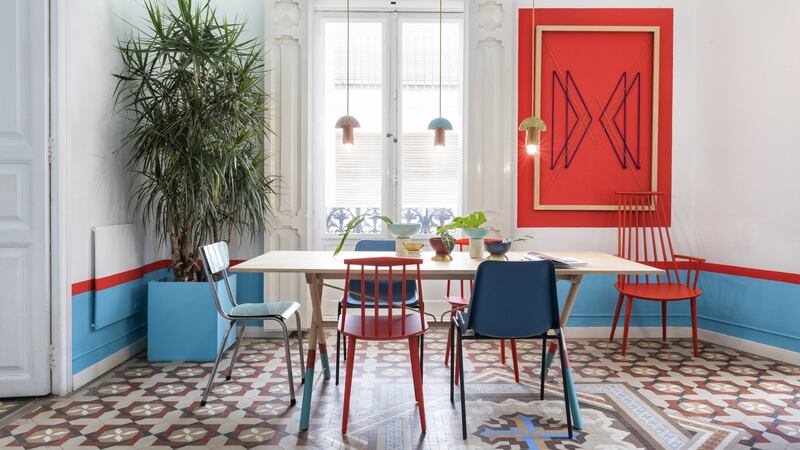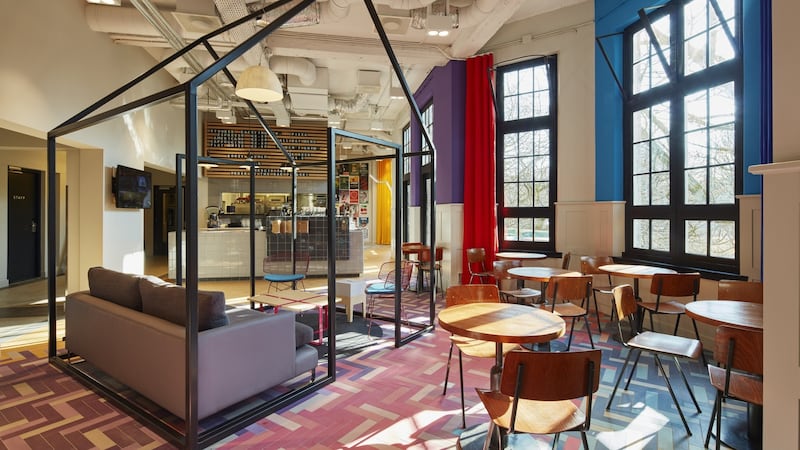For designers to successfully distil the essence of a hospitality venue and incorporate it into the interior concept, they not only need to adhere to the client’s brief – they must also stay ahead of the game.
They have to anticipate the needs of customers and ups the ante in order to meet the requirements of tech-savvy millennials and globe-trotting travellers. Defining what a bar, restaurant or hotel is in today’s fast-paced world is ever-changing and the creative team need to determine this at the outset of every commission, in particular in relation to the venue’s locality, where inspiration can often come from the surrounding context.
In selecting the content for Night Fever 5 (Frame Publishers) - which showcases remarkably-designed hospitalitiy hotspots from all over the world, my task was to choose projects based on their original concept, innovative approach and unmistakable wow factor. The selection includes projects by young studios and world-renowned firms alike and follows the creative journey from concept to completion. Readers can discover exactly how these designers meet challenges and juggle specific elements of a project to conjure a signature vibe.


More than 100 venues are featured from bijou bars and small eateries to multi-level clubs and exclusive hotels – detailing the field’s latest trends.
What's hot
The time when a hotel was just a place to rest your head is long gone. These hospitality hubs are destinations for social interaction, the design of which more often than not can offer an insight into the local heritage and cultural reflection.
People seek a connection when they travel; they want to both feel at home and discover new things, whilst having an authentic experience. This is what Spanish design studio Masquespacio aimed to deliver when creating the energetic interior for the Valencia Lounge Hostel.
Creative director Ana Milena Hernández Palacios explains: “We wanted to recreate for guests the feeling of staying in a home, but also for them to be able to disconnect and dream.”
The various zones are designed to have different personalities – there’s a room for surfing fans, for music aficionados, and an ethnic-styled space – and the team’s hope is that this concept can inspire visitors to take some ideas from the interior and use them for their own, whether it be the use of vintage tiles or not being afraid to combine blocks of bold colour with geometric patterns.
Masquespacio's Christophe Penasse offers this advice: "Take a risk and go for an emotional and innovative design solution, as users are seeking daily for new experiences all over the world."
Interiors with a distinctive colour palette can be seen recurring throughout the book – with electric blue and soft pink hues popping out of the pages – teamed with a sumptuous materiality.
Dining destination
An exemplary dining destination is the lush interior that India Mahdavi assigned to the restaurant at The Gallery in London’s Sketch cultural institute. With her first glance at the location, in a converted 18th-century building, the designer apparently said, “The space shall be pink!” – and so it is. The lush, dreamlike setting is filled with pale rosy glow, with velvet furnishings (Mahdavi’s own designs) and accents of copper detailing.
It is this sense of escapism that abounds throughout the book and interiors with a luxurious quality open their doors to guests and voyagers alike. On stepping inside the bar at Hôtel Plaza Athénée in Paris, customers are wowed by an interior which has elements of traditional elegance coupled with a show-stopping ceiling. The overhead installation reveals itself as a surreal, blue fabric sky, draped capriciously to create a hyperbaroque spectacle.
Local studio Jouin Manku, headed by Patrick Jouin and Sanjit Manku, took an avant-garde approach to designing the space while still incorporating elements of historic design vernaculars.
Though is the luxurious side of the hospitality scene one to be expected? This is was what the designers had to say on the topic in an interview in Frame magazine: "The search for luxury is just a search for something that's not been done before," says Jouin. "There is nothing left to be done in the middle ground. So I think more people will be taking bigger risks."
Manku also raises a salient point, and another trend in the book, with his comment, “What is interesting is how technology is connecting us with things we want. When you travel, you look for extraordinary experiences.”
Multimedia appeal A venue that engages patrons with the lure of multimedia appeal, as well as its imaginative accents and materials, is the M Social hotel in Singapore, by Philippe Starck. In the lobby there are digital screens conceived as an “
open-source platform of expression” to which artists can submit work for display, and a bar counter that has LED lights above, using motion-detection technology to change with the flow of customer traffic.
The guest rooms are also chock-full of gadgetry and serve as radical and playful explorations into various typologies of comfort and domesticity. Why not delve into this barometer of design? You are invited to check-in on this grand global tour of the hospitality scene and be enlightened by its unique stream of creativity, innovation and spatial context.


















